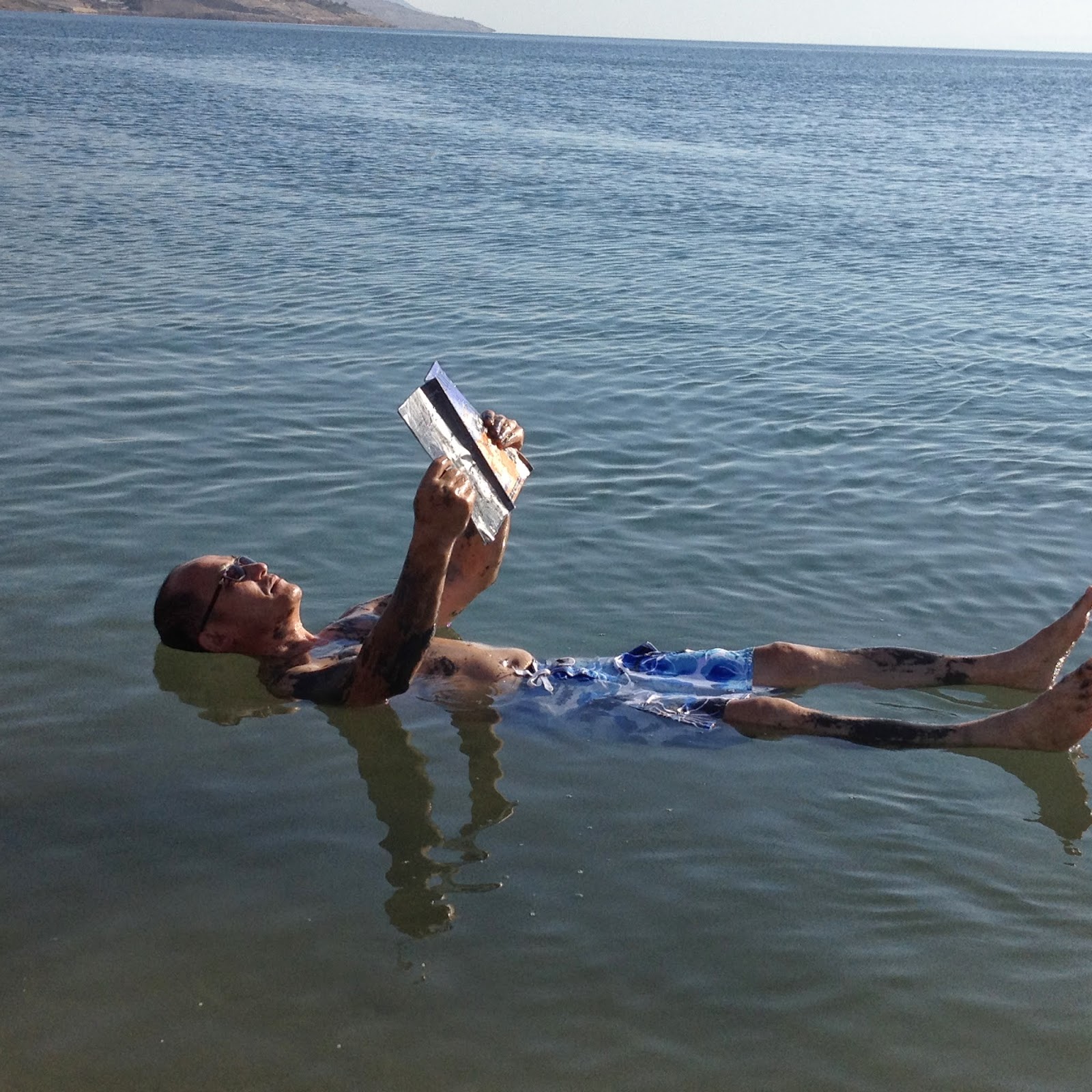 |
| Like Bodouins at Wadi Rum |
Jordan is a melting pot culture. It is a biblical site full of names and places that appear in the bible. These include Mt. Nebo where Moses looked over the promised land, but could not enter, Dead Sea of course, Jordan River that flows from Lake Galilee to Dead Sea, Jerash or Gerash where Jesus expelled a host of ghosts to enter into a herd of pigs. This land used to be inhabited by Edomites, Ammonites, Moabites. Later, Nabbateans lived and dominated in the region, thus creating the massive and impressive Petra, the lost city or the rose-red city, full of architectural sculptures carved on sandstone mountains. Roman theaters are in Amman and Jerash. Greek temples and Roman temples coexist while Christian heritages are also evident. Many places show the mixed culture of the local, Roman, Greek empires and Christian influences. Jordanians must have been very adaptive and embracing.
Jordan is famous for Petra. Petra means a feminine form of rock in Greek. (Compare it to Petro for Peter.) Petra is a lost city which was discovered by a Swiss explore in 19th century. It has a lot of architectural sculptures carved on sandstone mountains all over the place. This city used to be occupied by the native people, called Nabbateans. They were bedouins, or people living in the tents moving around in the deserts. They dominated the region with caravan trades for quite some time, but finally conquered by and annexed to the Roman Empire. And the natives extinguished. Almost.
The current Jordanians are composed of various people groups. The majority is Palestinians. Hundreds of years ago, they settled in this area and live peacefully. Even the current queen is a Palestinian. But if you go back a little further, their ancestors are all the same people.
Jordan does not produce oils or have rich minerals. Its main FX earning industry is tourism. Obviously the main attraction is Petra, probably 90%. The rest includes Dead Sea and recently Jerash that is attracting tourists with archaeological sites full of ruins of different ages. Jordan also produces pomogranates and olives.
Mt. Nebo is a place where Moses looked over the promised land and died. It is almost a hill but it carries a significance because of Moses. A cross with a bronze snake illustrates the miracle in the Old Testament, symbolizing the death of Jesus Christ on the cross later on. On the way, we visited a castle that was used by the colonialists, primarily to defend themselves against the attacks from the local indigenous people.
Petra was enormous and impressive. The famous Treasury was obviously beautiful and almost inspirational, but there were lots of other architectural sculptures carved on sandstone mountains. I managed to climb all the way to Monastery that is another 50 meter by 50 meter structure, gigantic although lacking some details evident on the Treasury. The lookout places at the Western edge over the Wadi Araba, the valley towards Dead Sea and Israel, was jaw-dropping. It was like Grand Canyon. Not quite but close enough.
Camels, donkeys, mules and horse carriages were attracting tourists who prefer not to walk too long or not to climb the steps to higher places, such as Monastery, the Higher Altar, Royal Tombs etc. We managed to climb all the way to Monastery.
The gorge or pathway from the entrance to the Treasury was just fabulous. Particularly, the night sky covered with countless stars during the Petra by Night was gorgeous and almost mystic.
Mosaic art is Jordan's pride. Jericho's tree of life made of stone-mosaic art showed a cycle of eco system. Also vases and plates were made of mosaic-looking art, but in fact ceramic work. They make plates, table tops, chairs and wall-hanging decorative art pieces with this mosaic art. Jordan has the oldest mosaic art pieces in St. George Church, a Greek Orthodox Church in Madaba.
Wadi Rum is an impressive place. This is where the movie "Laurence of Arabia" was filmed. Coincidentally, the main actor Peter Otool passed away several months ago. We did a two-hour jeep tour (desert safari) in this canyon-like desert that is filled with red rocks and mountains. I tried to dress like Bodouins, the nomadic people of Arab while we were visiting one of their tents.
Dead Sea is an unforgettable experience. Because of high salt contents, this lake is extremely salty. It is the lowest dry point on earth, approximately 400 meters below the sea level. It receives water from Jordan River and does not flow anywhere. It only evaporates, thus ending up with high quantify of salt. You do not need to know how to swim. You cannot sink or drown here. You just float. The soils contain rich minerals and thus produce good cosmetic or bathroom goods. I tried the mineral-filled mud on my body and floated on the Dead Sea pretending to read a magazine.
Historically rich Jordan. We have not been able to explore the country to the full extent of satisfaction, but it has been a wonderful experience of making the bible come alive with visible evidences of certain sites. - Jeffrey




























No comments:
Post a Comment